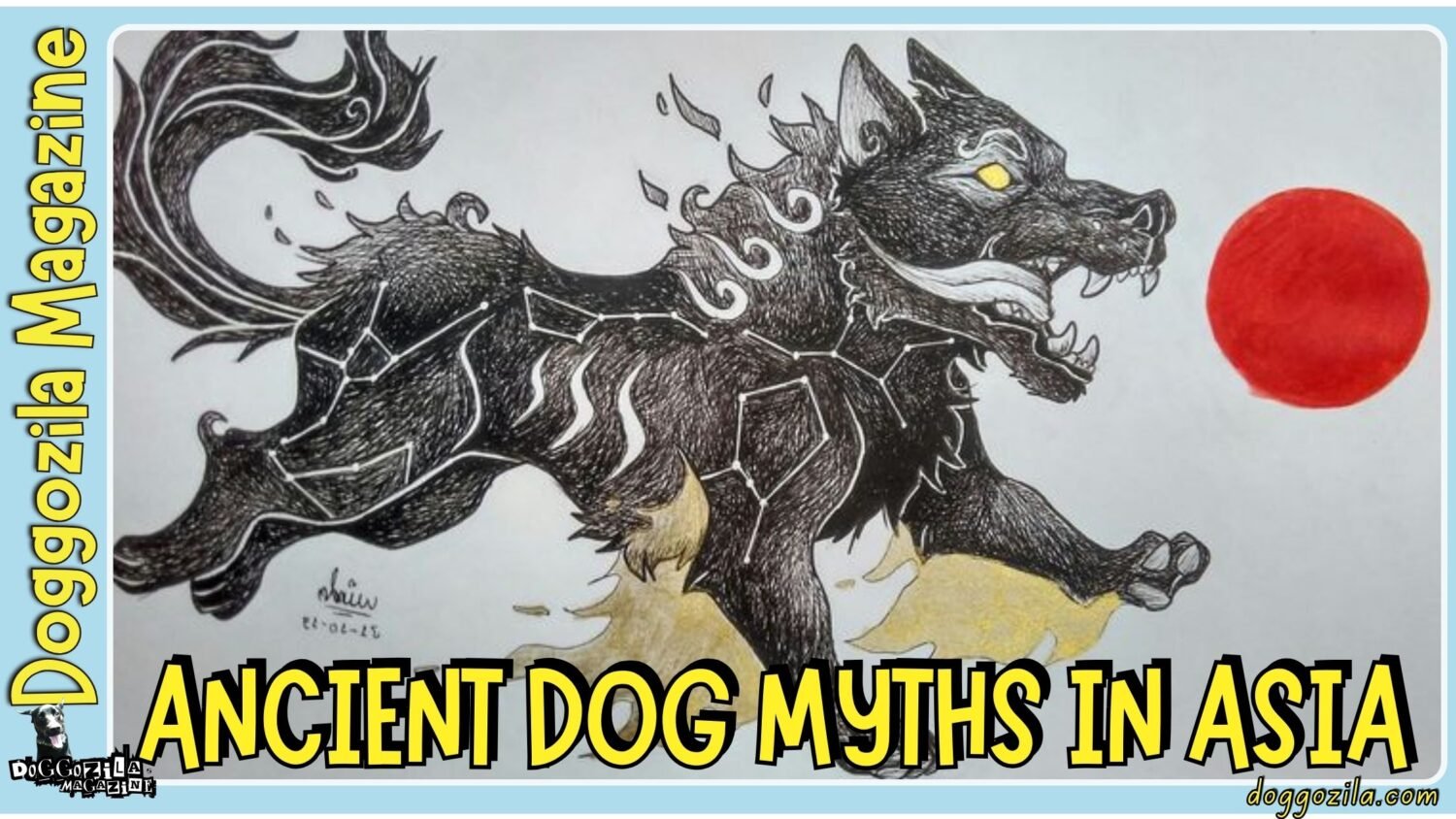When left alone or mentally unstimulated, dogs will invent games, and spinning in pursuit of their own tail is one of them. It provides immediate sensory feedback like motion, resistance, and even a bit of dizziness-induced euphoria. So, why do dogs chase their tail in empty rooms or during long, quiet hours? Well, because it’s a self-entertaining thrill ride.
Ah, the glorious, slightly dizzying spectacle of a dog chasing its tail. It’s a behavior as old as dogs themselves, a spinning, whirling enigma that leaves us equal parts amused and perplexed. Is it pure, unadulterated goofiness? A canine meditation practice gone slightly awry? Or perhaps a secret ritual passed down through generations of wagging bottoms?
Grab your detective hat (and maybe some motion sickness pills), because we’re diving deep into the whirlpool to finally answer the age-old question: Why do dogs chase their tail? Prepare for a tail-waggingly epic adventure into the canine psyche!
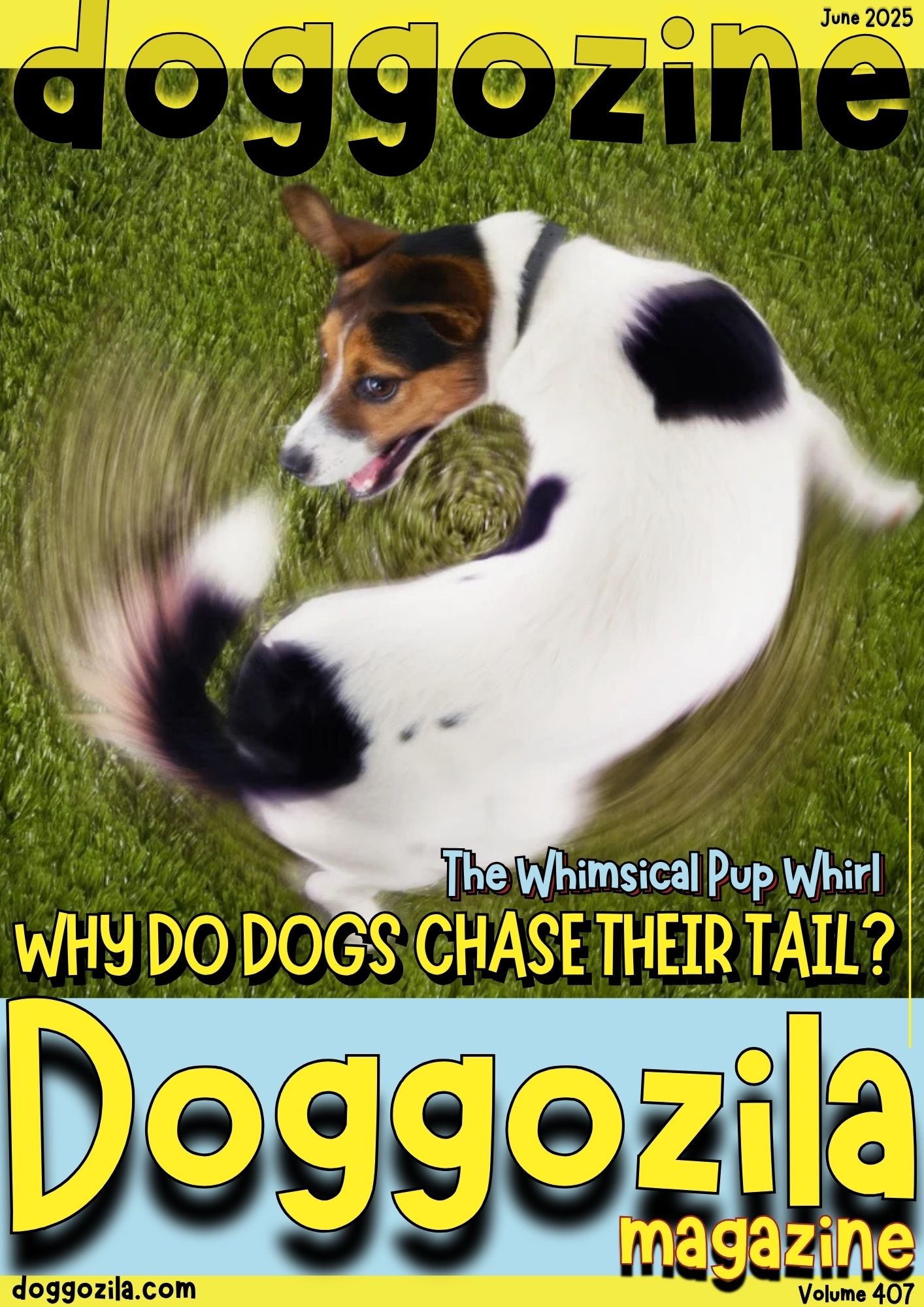
THE GREAT TAIL CHASE MYSTERY: WHY DO DOGS CHASE THEIR TAIL AS PUPPIES?
Tail-chasing is part comedy act, part behavioral mystery. Sometimes it feels like our pups are putting on a show, whirling like fuzzy tornadoes in a game of solo tag. But behind that goofy spin is a mix of instincts, emotions, and mental stimulation that has intrigued canine researchers for years. The act might look silly, but it often carries clues about a dog’s emotional or physical state. From playful bursts to obsessive spirals, this quirky behavior isn’t as random as it seems.
Picture a fluffy, roly-poly puppy, barely coordinated enough to walk in a straight line, suddenly spots this intriguing, wiggly thing attached to its backend. It darts, it pounces, it spins in circles like a tiny, furry tornado! This initial discovery phase is pure exploration.
Dogs Start To Chase Their Tail From Curiosity
Puppies are sensory sponges, learning about their world through touch, taste, sight, and movement. That tail is essentially a built-in, ever-moving toy! They haven’t fully grasped the concept that this fascinating appendage is actually part of them. It’s like discovering you have a built-in feather duster you never knew about, of course you’d want to investigate!
This playful experimentation is crucial for developing coordination, spatial awareness, and bite inhibition. Think of it as their first, slightly chaotic, dance lesson. It’s instinctive, it’s hilarious to watch, and it’s a perfectly normal part of puppy development. That initial spark of curiosity, “What is that thing and can I catch it? “, is the innocent beginning of the saga.
The Puppy Playbook: Instinct and Exploration
When we ask why do dogs chase their tail, especially puppies, we’re witnessing fundamental learning in action. Their world is brand new and overwhelming, filled with sights, sounds, and sensations they’re desperate to understand. That constantly moving tail presents an irresistible, unpredictable target that triggers their innate prey drive and curiosity. It’s not malicious or a sign of something wrong; it’s pure, unadulterated exploration.
They are literally learning the boundaries of their own body, “This thing moves when I move? How fascinating! Can I grab it?” It’s akin to a human baby discovering their own feet and trying to shove them in their mouth. This phase is packed with trial, error, clumsy pounces, and triumphant (if accidental) tail grabs, all contributing to vital neural development and motor skills.
The sheer joy and determination in their clumsy spins are a testament to their developing brains figuring out how their body works in space. It’s a critical, and utterly charming, developmental stage where chasing that elusive fluff-ball teaches them volumes about themselves and their physical capabilities. Observing this natural curiosity helps us appreciate the complex learning happening beneath all that adorable fur and wiggles.
The Built-in Toy Theory
Sometimes, the simplest answer is the most accurate. For a bored puppy with limited toy options, what’s more convenient than a constantly available, interactive plaything attached right to their rear end? Why do dogs chase their tail if not for the sheer, simple fun of the chase? It requires no setup, no batteries, and it’s always ready for a game! The unpredictable sway and flick of the tail trigger the same instinctive chase response that a fluttering leaf or a rolling ball would.
It’s self-contained entertainment, a built-in game of tag where they are both the pursuer and the pursued. This is especially common during those bursts of unspent “puppy energy“, the dog zoomies, where they just need to move and do something, anything! Catching it (even briefly) provides a small jolt of satisfaction, reinforcing the behavior.
While we humans might reach for a stress ball, a puppy might just engage in a quick tail-chasing session as their go-to kinetic amusement. It’s pure, instinctive play behavior directed inward, a testament to a dog’s ability to find joy in the simplest, most accessible things, even parts of themselves! Watching a puppy gleefully chase its own tail is a beautiful reminder of the uncomplicated fun found in the present moment.
🔑 Key Points: For puppies, tail-chasing is a normal part of exploration and learning about their bodies. It helps develop coordination and bite inhibition.

BEYOND PUPPYHOOD: WHY DO DOGS CHASE THEIR TAIL AS ADULTS?
The context and frequency become crucial clues about this behavior in your dogs. Is it a brief, playful spin during a burst of energy? Or a persistent, almost obsessive behavior that seems out of place?
While it’s super common and usually harmless in puppies, seeing an adult dog suddenly take a keen interest in their tail can raise an eyebrow. It’s less about innocent discovery and more likely driven by other factors.
Dogs Do Chase Their Tails From Puppyhood To Adulthood
An adult dog rediscovering its tail might be reacting to a physical sensation (like an itch, pain, or something stuck), seeking attention (they know it makes you laugh or react!), or experiencing underlying boredom or frustration. It could also be a sign of a developing compulsive disorder, especially if the chasing is intense, prolonged, and difficult to interrupt.
Understanding the shift from puppy play to adult behavior is key to figuring out the true motivation behind the spin cycle. So, when Fido the full-grown Labrador suddenly starts chasing his tail like he’s possessed, it’s time to put on our detective hats and look deeper.
Seeking The Spotlight: Why Do Dogs Chase Their Tail Based On Attention-Seeking Habits
Let’s be honest, when a dog chases its tail, we humans usually react. We laugh, we point, we might even say, “Look at you, silly dog!” And dogs are masters at picking up on what gets them attention. Why do dogs chase their tail sometimes? Because it works! If a dog discovers that performing this spinning trick earns them laughs, pets, or even concerned cooing from their beloved humans, they are highly likely to repeat it.
It becomes a learned behavior, a surefire way to become the center of attention. This is especially true for dogs who might feel a bit neglected or crave more interaction. A quick tail chase can be a far more effective way to get you to look up from your phone than sitting politely!
Case in point: My neighbor’s terrier, Pickles, became a tail-chasing maestro only when guests arrived. He’d perform a few dizzying spins, bask in the applause, and then happily trot off. It was his signature party trick, purely attention-driven. Recognizing this motive helps us respond appropriately, calmly ignoring the behavior while rewarding calm alternatives is key to preventing it from becoming a demanding habit. Understanding the attention-seeking angle reminds us that sometimes the answer to why do dogs chase their tail lies not in their tail, but in our reactions to it.
The Itch They Just Can’t Scratch: Physical Triggers
Sometimes, the answer is frustratingly literal. An intense, sudden focus on the tail area, perhaps accompanied by snapping, biting, or licking, is a huge red flag that something physically is wrong. Why do dogs chase their tail if not because it’s genuinely bothering them? Fleas, ticks, allergies (food or environmental causing itchy skin), impacted anal glands, wounds, hot spots, or even musculoskeletal pain in the tail or hindquarters can trigger this behavior.
The dog isn’t chasing for fun; they are desperately trying to alleviate discomfort, irritation, or pain originating near their tail. It’s an attempt to investigate and soothe the source of the problem. Think of it like having an incredibly annoying itch right in the middle of your back that you just can’t reach, you’d twist and turn and try anything to get at it!
If your adult dog starts chasing or biting at their tail persistently, especially if it’s a new behavior, your first stop should absolutely be the veterinarian. Ruling out medical causes is paramount before assuming it’s behavioral. Ignoring this could mean leaving your dog suffering from a treatable condition. The physical trigger explanation underscores that tail chasing isn’t always quirky; sometimes, it’s a vital distress signal we need to heed promptly.
🔑 Key Points: While puppies do it playfully, adult dogs may chase their tails due to boredom, attention-seeking, physical discomfort, or compulsive behavior.
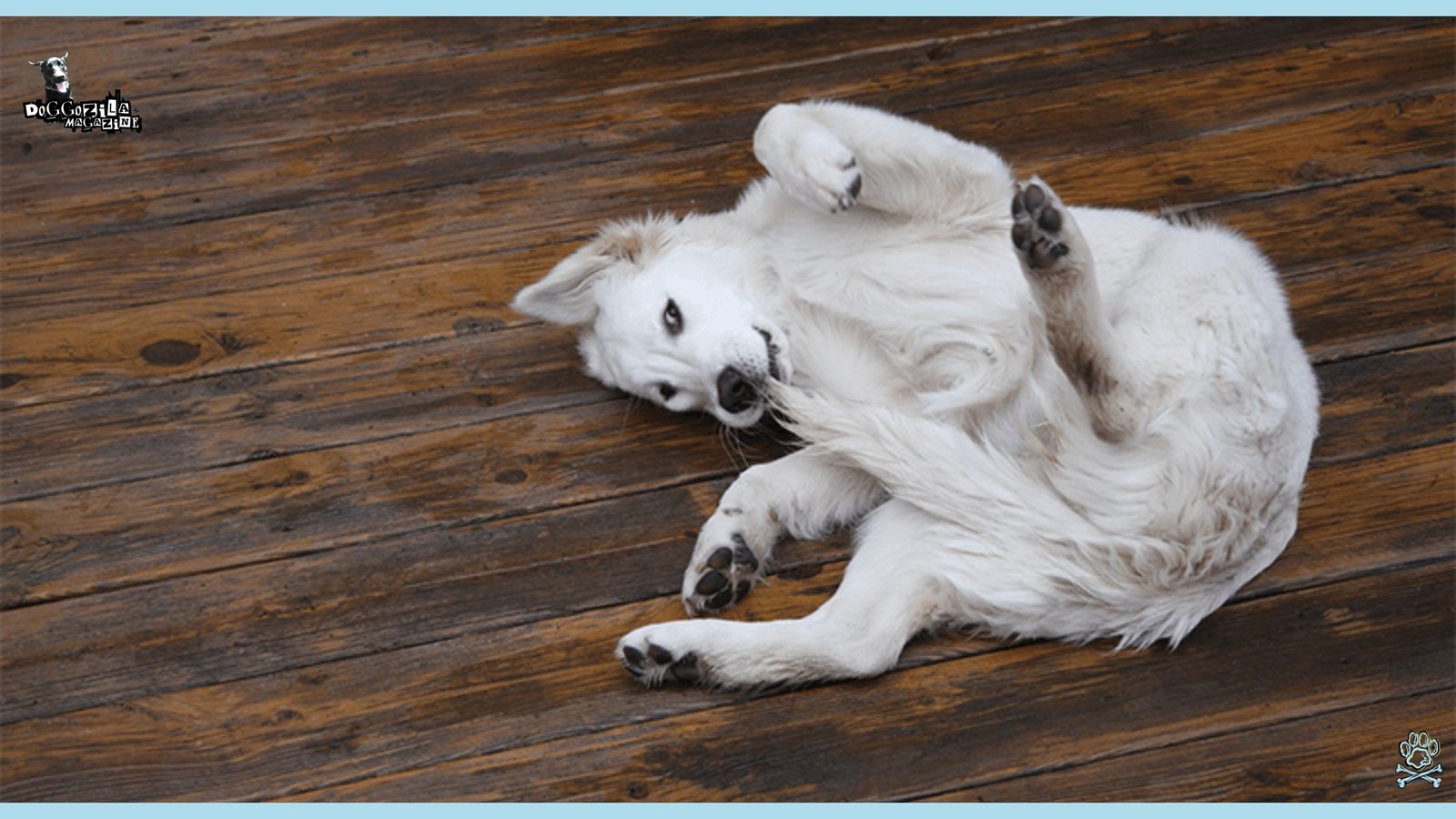
THE BREED FACTOR: WHY DO DOGS CHASE THEIR TAIL MORE OFTEN IN CERTAIN BREEDS
Step into any dog park, and you might notice a pattern. While any breed can chase its tail, some seem genetically predisposed to give themselves a case of the spins more often. High-energy herding breeds like Australian Shepherds, Border Collies, and German Shepherds frequently top the list. So, why?
Their breeding honed intense focus, lightning-fast reflexes, and a powerful chase instinct, originally directed at sheep or cattle, but sometimes that laser focus turns inward onto their own moving tail. Terriers, bred to relentlessly pursue vermin, also often exhibit high prey drive that can manifest in tail chasing.
Understanding breed predispositions
Conversely, breeds with shorter tails or corkscrew tails (like Pugs or Bulldogs) might find it physically harder or less enticing to chase, though they certainly have their own unique quirks! It’s not that these breeds are “silly“, it’s that their very DNA is wired for high-intensity focus and movement.
When that incredible drive isn’t adequately channeled into appropriate activities (like herding, agility, or intense play), it can sometimes find a less productive outlet. Understanding breed predispositions helps us provide better outlets for their natural instincts.
Herding Instincts Gone Rogue: The Collie Conundrum
Delving deeper into breed specifics, the herding dog connection is fascinating. Why do dogs chase their tail more frequently if they belong to a herding breed? The answer lies deep in their genetic programming. Border Collies, Aussies, and their kin were selectively bred for generations to exhibit “eye“, an intense, almost hypnotic stare used to control livestock.
They also possess an incredibly strong “chase” reflex and a need for constant mental and physical stimulation. When these powerful instincts aren’t given a proper job or sufficient exercise, they can misfire. That tail, flicking and moving within their peripheral vision, can inadvertently trigger their ingrained herding sequence: stare, stalk, chase. It’s not deliberate, it’s a primordial circuit lighting up without its intended target.
Dr. Ava Waggles (a fictional but insightful canine ethologist we’ll invent for this adventure!) theorizes it’s akin to a “default mode” for their hyper-focused brains. Studies observing working herders versus pets show a significant decrease in such repetitive behaviors when the dogs have appropriate outlets.
So, for the collie spinning like a top in your living room, the answer to why do dogs chase their tail might simply be unspent herding energy looking for the nearest moving target, even if it’s attached to their own backside! Providing complex tasks, advanced obedience, or dog sports is often the best “off switch” for this instinctual spin cycle.
Do Dogs Chase Their Tail To Satisfy Prey Instincts That Never Fully Went Away
Terriers on the Hunt: Terriers, those feisty bundles of determination, present another compelling angle on the breed connection. Bred to dig, chase, and dispatch small, fast-moving creatures, terriers possess an exceptionally high prey drive. Why do dogs chase their tail if they’re terriers?
Because that swiftly moving tail tip, darting just out of reach, perfectly mimics the erratic movements of a rodent or bird triggering their innate “hunt” sequence. It’s less about herding focus and more about the thrill of the chase and capture. For a Jack Russell Terrier or a Fox Terrier, that tail isn’t just a body part, in a moment of under-stimulation or excitement, it transforms into “prey.”
The sudden dart, the focused intensity, the snapping jaws, it’s their predatory instincts momentarily short-circuiting onto themselves. Unlike the herding dog’s sustained stare, a terrier’s tail chase might be more explosive and bite-oriented. This doesn’t mean they’re aggressive, it means their powerful biological imperative to chase small, quick things is momentarily misdirected.
Understanding this prey drive paradox helps owners provide safer, more appropriate outlets like flirt poles, fetch with small fast-moving toys, or structured “find it” games to satisfy that deep-seated need to hunt without turning their own tail into the quarry. Recognizing the prey drive link answers why do dogs chase their tail for these spirited little hunters.
🔑 Key Points: Some dogs learn that chasing their tail gets a reaction from their owners, making them repeat the behavior for attention.

WHEN FUN TURNS TO FIXATION: UNDERSTANDING COMPULSIVE TAIL CHASING
This is where our adventure takes a slightly more serious turn. While occasional tail chasing is normal, especially in pups, it can sometimes escalate into a genuine behavioral disorder known as Canine Compulsive Disorder (CCD). Think of it like OCD in humans, repetitive behaviors performed out of context, often excessively, and seemingly driven by anxiety or internal tension rather than external triggers.
Why do dogs chase their tail compulsively? It often starts as a normal behavior (play, exploration, reaction to an itch) but then becomes a self-soothing mechanism or a way to release pent-up stress that the dog feels unable to control.
Do Dogs Chase Their Tail Because Of Environmental Factors
Environmental factors play a massive role: chronic stress, lack of mental stimulation, insufficient physical exercise, confinement, anxiety (like separation anxiety), past trauma, or even frustration can tip the scales. The behavior itself can release endorphins, creating a cycle where the dog chases to feel better, but the chasing becomes the problem.
It’s crucial to distinguish this from playful or attention-seeking chasing. Compulsive chasing is often more intense, prolonged, happens in specific contexts (like when left alone or during stressful events), and can be very difficult to interrupt. The dog might even injure itself. Recognizing this shift is vital for getting the right help.
The Stress Spiral: Anxiety As The Engine That Makes Dogs To Chase Their Tail
At the heart of many compulsive tail-chasing cases lies anxiety. Why do dogs chase their tail obsessively if not driven by underlying stress? For these dogs, the spinning ritual becomes a maladaptive coping mechanism. The rhythmic, repetitive motion can have a trance-like, almost dissociative effect, temporarily numbing feelings of fear, frustration, or overwhelming anxiety. It’s a physical outlet for internal turmoil they can’t express otherwise.
Common triggers include the dog fear of loud noises (thunderstorms, fireworks), prolonged confinement (crating without adequate breaks/exercise), chaotic environments, inconsistent routines, or specific phobias. We recall a case study (adapted for anonymity) of “Buddy,” a rescue dog who developed severe tail chasing only when his owner picked up car keys or put on shoes, classic separation anxiety cues.
The anticipation of being left alone triggered such intense panic that tail chasing became his frantic, dysfunctional attempt to self-calm. The behavior wasn’t about the tail, but it was a desperate scream of anxiety manifesting physically. Breaking this cycle requires identifying and addressing the root cause of the anxiety, not just punishing the symptom. Understanding the stress spiral is key to answering why do dogs chase their tail in these distressing scenarios and finding compassionate solutions.
Breaking the Cycle: Intervention is Key
Once tail chasing becomes compulsive, it’s not something a dog can just “snap out of.” Professional intervention is crucial. Why do dogs chase their tail persistently despite our efforts to stop them? Because the behavior has become neurologically ingrained, often reinforced by the chemical release (endorphins) it provides.
Breaking this cycle requires a multi-pronged approach!
- Veterinary Check: Rule out ANY underlying medical causes (pain, itch, parasites, neurological issues). This is step zero, non-negotiable.
- Behavioral Veterinarian or Certified Behaviorist: These experts can diagnose CCD, differentiate it from other issues, and design a tailored treatment plan. Medication (like SSRIs) might be necessary alongside behavior modification to reduce the underlying anxiety and increase the threshold for the compulsive urge.
- Environmental Enrichment & Management: Drastically increase physical exercise (tailored to breed/age) and mental stimulation (puzzle toys, nose work, training). Remove or minimize known stressors. Provide safe spaces. Manage the environment to prevent rehearsal of the behavior. (e.g., using a basket muzzle temporarily under supervision to prevent self-injury while other strategies take effect, or interrupting before the chase starts)
- Behavior Modification: Techniques like “Differential Reinforcement of Incompatible Behavior” (DRI) are key. This means heavily rewarding the dog for performing a behavior that is physically impossible while chasing its tail. (e.g., holding a “down-stay” or calmly chewing a stuffed Kong) The goal is to replace the compulsive spin with a calm, rewarding alternative behavior. Punishment is counterproductive, often increasing anxiety and worsening the compulsion.
- Patience and Consistency: Changing deep-seated compulsive behavior takes significant time, consistency, and patience from everyone involved. It’s about rewiring brain pathways and building new, healthier coping skills. Understanding the need for this comprehensive approach is vital when confronting the complex question of why do dogs chase their tail compulsively and how to help them find peace.
🔑 Key Points: Fleas, allergies, pain, or skin irritations may cause a dog to persistently chase or bite its tail. Then is requiring asap veterinary attention.
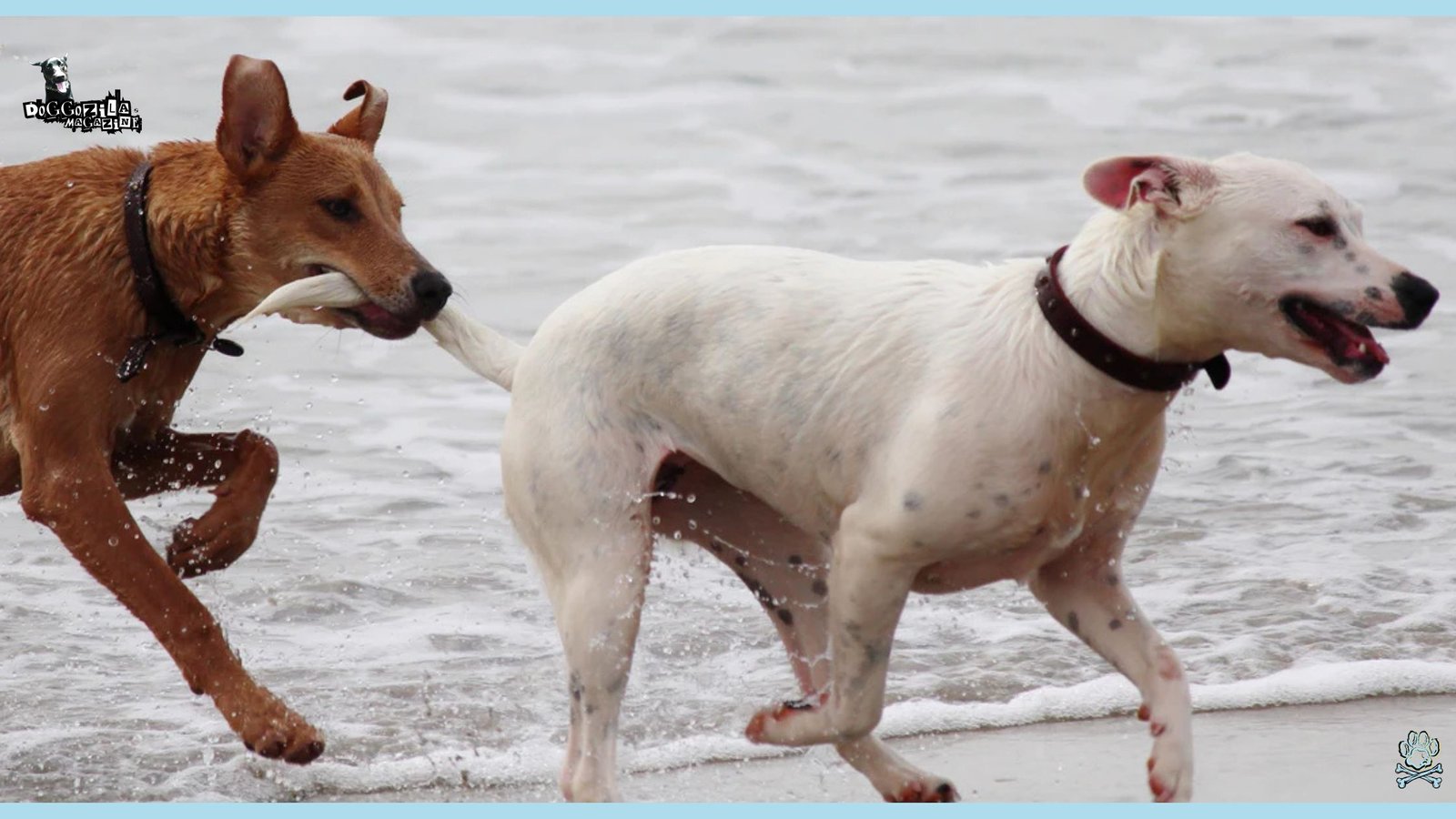
THE MYTH-BUSTING ROUNDUP: SEPARATING TAIL TALE FROM TRUTH
Our tail-chasing adventure wouldn’t be complete without tackling some of the wild myths floating around! Over centuries, humans have concocted some pretty imaginative, yet utterly false, explanations for this dog behavior. Knowledge is power, especially when it comes to our furry friends’ well-being!
Let’s shine the light of science and reason on these tall tales and get to the real wag behind the spin. Debunking these myths is essential for understanding our dogs and responding appropriately to their behavior.
Myth #1: “They’re Trying to Catch a Flea Circus!”
This is a classic, often said with a chuckle. Why do dogs chase their tail according to this old wives’ tale? Because they’re supposedly infested with fleas putting on a tiny performance back there! While it’s true that fleas or other skin irritations can cause a dog to bite or chase its tail (as we discussed earlier). The idea that they are literally seeing and chasing individual fleas like miniature performers is pure fantasy.
Dogs react to the sensation of itching or biting, not a visual spectacle of acrobatic parasites. If fleas are the culprit, the dog will likely be scratching, biting, and showing signs of irritation all over his body. He will start performing playful or obsessive spins focused solely on the tail tip.
Attributing normal puppy play or complex compulsive behavior to non-existent flea circuses trivializes the actual reasons and can prevent owners from seeking real solutions for genuine problems. The real reasons why do dogs chase their tail are far more nuanced and interesting than this simplistic myth suggests.
Myth #2: “They’re Just Plain Silly”
This harmful and completely inaccurate myth deserves a swift debunking. Why do dogs chase their tail according to this ignorant view? Supposedly due to a lack of intelligence. Nothing could be further from the truth! Tail chasing, in its various forms (play, exploration, compulsion), has absolutely no correlation with a dog’s overall intelligence. Brilliant Border Collies chase their tails. Clever Poodles do it.
Savvy mixed breed dogs engage in it.
As we’ve explored, one moment we noticed that their motivations are complex! Instinct, learning, play, attention-seeking, medical issues, anxiety, none of which relate to cognitive deficiency. In fact, some of the breeds most prone to compulsive behaviors are among the smartest. Their complex brains, lacking sufficient outlet, can sometimes turn inward in unhealthy ways.
Labeling a dog “silly” for this natural or stress-related behavior reflects a profound misunderstanding of canine cognition and psychology. It shuts down curiosity and prevents empathetic understanding of the true underlying cause. Dismissing the complex question of why do dogs chase their tail with “they’re silly” is lazy and unhelpful. Our dogs deserve better than such simplistic, erroneous judgments.
🔑 Key Points: High-energy herding breeds (like Border Collies) and terriers (with strong prey drives) are more likely to chase their tails due to instinctual behaviors.
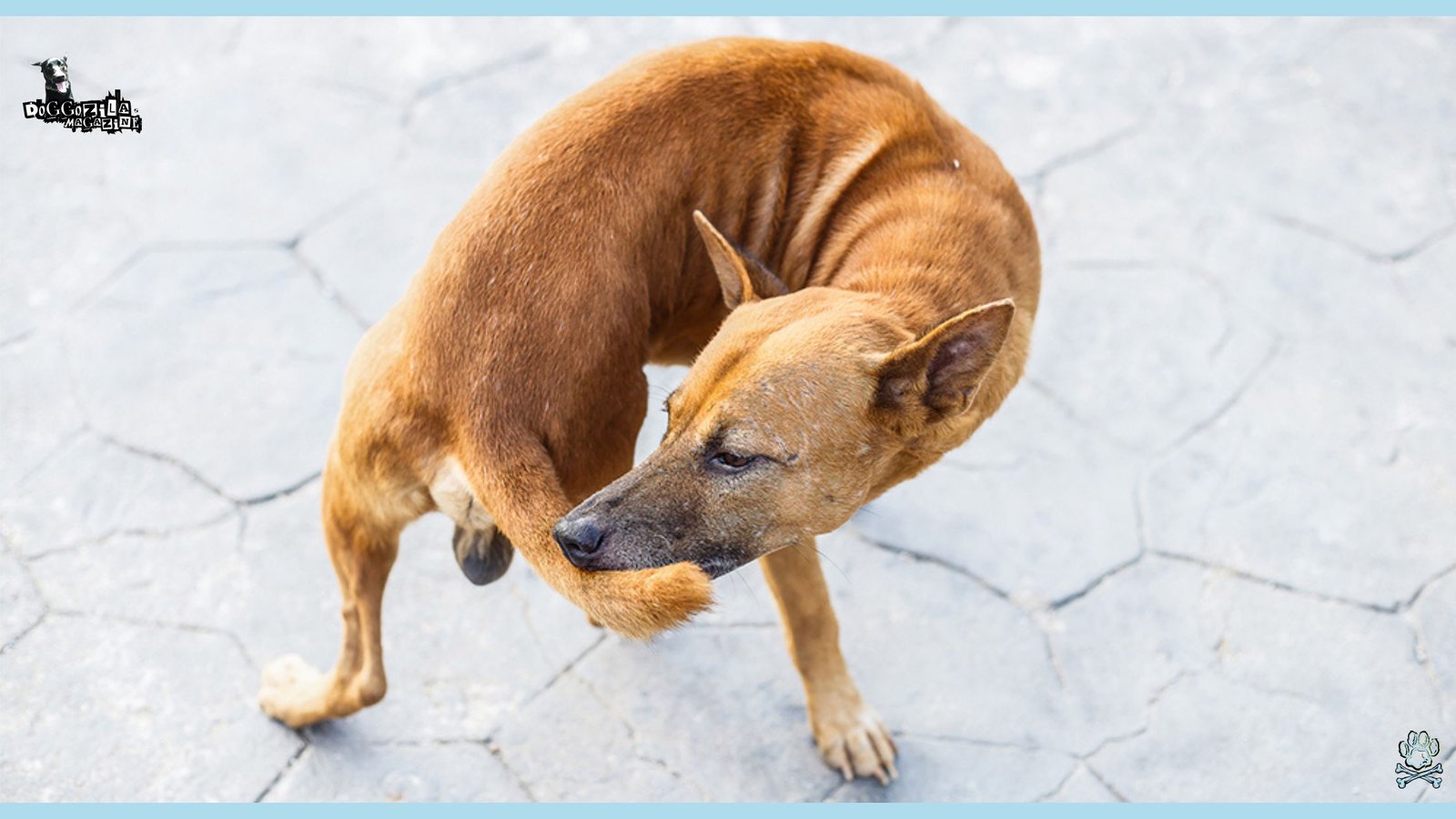
EMBRACING DOGS THAT CHASE THEIR TAIL: WHEN TO RELAX AND WHEN TO REACT
So, after our whirlwind tour of tail-chasing motives, how do we, as responsible and loving dog guardians, navigate this behavior? The key is becoming an astute observer of your own unique dog. Developing this discernment allows us to relax and enjoy the harmless antics while knowing when it’s time to step in and seek help. It’s about finding that balance between amusement and advocacy for our canine companions.
Not every spin is a sign of doom, nor is every chase purely innocent fun. Occasional playful tail-chasing is harmless, but frequent, intense, or self-injuring behavior requires professional intervention to address medical or psychological causes.
The Joyful Chase: Signs It’s Probably Fine
Let’s celebrate the fun! Why do dogs chase their tail in a way that should make us smile?
Look for these signs of harmless, joyful chasing! It happens occasionally, usually during bursts of excitement or play (like after a bath or during the “zoomies“). The dog appears relaxed, happy, and engaged, think wagging tail (ironically!), playful barks, a “bouncy” body posture. It’s easy to interrupt. Call their name or offer a toy, and they readily disengage to come to you.
The chasing lasts only a few seconds or a minute or two. There’s no biting or aggression directed at the tail, just playful nips or grabs. This is especially common in puppies and young dogs. If your dog checks these boxes, grab your phone, record the hilarious spectacle, and enjoy the moment! It’s a perfectly normal canine expression of exuberance, curiosity, or just plain silliness.
Understanding why do dogs chase their tail in this context is about appreciating their capacity for spontaneous joy and playfulness. Even if it’s directed at themselves. Relax, laugh, and maybe join in with a playful spin of your own (no judgment here!).
Red Flags for Dogs That Chase Their Tail: When the Whirl Becomes a Worry
Knowing when tail chasing warrants concern is crucial. Why do dogs chase their tail in a way that should prompt action?
Watch for these serious red flags:
The chasing is frequent, prolonged, and intense, happening daily or for extended periods (5-10 minutes or more non-stop). It seems compulsive, the dog appears fixated, in a trance-like state, and is very difficult or impossible to interrupt.
There’s evidence of self-injury like hair loss, raw skin, bleeding, or open wounds on the tail. The chasing is accompanied by signs of distress such as whining, growling at the tail, and anxious body language. (panting when not hot, pinned ears, tucked tail during the chase attempt), Even aggression if interrupted. It starts suddenly in adulthood with no prior history. It happens in specific stressful contexts (like during storms, when left alone, or during chaotic events).
If you observe any of these signs, it’s no longer just a quirky habit. This is your dog signaling that something is wrong – physically or emotionally. The answer to why do dogs chase their tail in these cases requires professional investigation. Don’t delay, consult your veterinarian immediately to rule out medical causes and discuss potential behavioral interventions. Prompt action can prevent suffering and help your dog find relief.
🔑 Key Points: If tail-chasing becomes obsessive, it may indicate Canine Compulsive Disorder (CCD). Often is linked to stress, lack of stimulation, or anxiety.

THE TAIL CHASE END: CELEBRATING DOGS AND THEIR QUIRKS (SAFELY!)
The sight of a dog gleefully, or sometimes frantically, chasing its own tail is a uniquely canine phenomenon! A blend of instinct, biology, environment, and sometimes, just pure, unadulterated goofiness. We’ve journeyed from the wobbly explorations of puppy hood to the potential complexities of compulsive disorders, debunked myths, and learned to read the signs.
Understanding the multifaceted reasons why do dogs chase their tail ultimately makes us better, more empathetic companions to our four-legged friends. It allows us to laugh with them during their moments of innocent silliness. To advocate fiercely for them when the behavior signals distress.
The Most Important Takeaway About Dogs That Chase Their Tail
Observe your dog with curiosity and compassion. Enjoy the harmless spins as the delightful quirks they are. But never ignore the signs that the chase has turned from fun to fixation. By providing ample exercise, mental enrichment, a stable environment, and seeking professional help when needed, we can ensure our dogs live happy, balanced lives. Whether their tails are peacefully wagging or occasionally, joyfully, being pursued in a perfectly normal game of “catch-me-if-you-can.”
After all, a little bit of harmless spinning is just part of the wonderful,
sometimes bewildering, adventure of sharing our lives with dogs.

Now, if you’ll excuse me, I think I see my own dog eyeing his tail… wish me luck!








